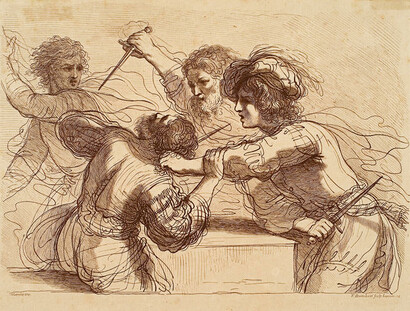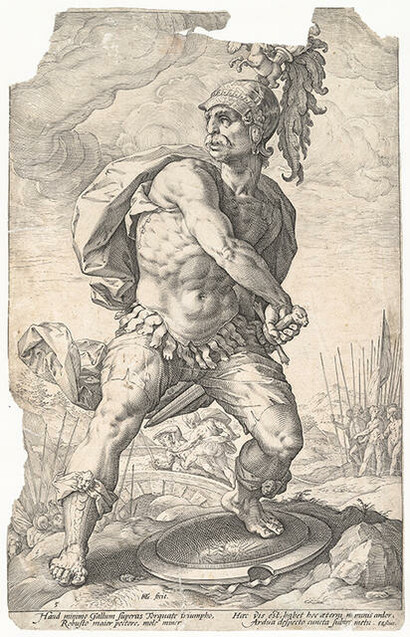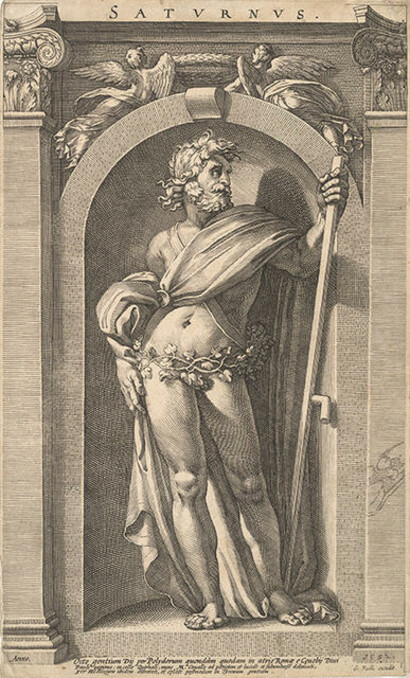This exhibition is now closed
Graven Images
24 February –
27 March 1994
This exhibition comprises 23 engravings by Netherlands and British artists of the sixteenth, seventeenth, and eighteenth centuries. It was during these centuries that the greatest developments in engravings occurred. In the sixteenth century Netherlands artists such as Lucas van Leyden and Hendrik Goltzuis came to prominence and made considerable advances on the engraving technique. Hendrick Goltzius in particular was the first to use the graver successfully to express tonal surface qualities bringing the engraved image closer to that of painting.
The demand for prints gave rise to the emergence of print sellers and publishers and an increase in work for reproductive and interpretative engravers. Although there were many major commissions offered in print publishing it was mainly in the field of reproductive engraving during the first half of the seventeenth century that some of the most important engraved work was done led by schools of etchers and engravers employed by Peter Paul Rubens and Anthony van Dyck. These graphic artists carried the stylistic system developed by Goltzuis and his school to a new level of virtuosity and perfection.
Peter Paul Rubens entered into the workshop reproduction for his own paintings early in his career and as his success as a painter grew he was able to gather together in his Antwerp studio some of the best contemporary engravers he could find. Among the most notable to emerge from Rubens' studio was Lucas Vorsterman and Paul Pontius. Both were later employed by van Dyck in the production of his celebrated portrait series, Iconography. As well as Vorsterman and Pontius van Dyck employed other graphic artists including Pieter de Jode. By the time Iconography was published in 1646 it comprised more than 100 plates.
During the course of the eighteenth century, particularly reproductive engraving gained pre-eminence in Britain utilising newer techniques such as stipple and mezzotint, exemplified in the work of Richard Earlom and Fransceso Bartolozzi. This was also the age of individualism not only on the work of artists but also their lives. Among the British artists in this exhibition Sir Robert Strange was an adventurer and Francesco Bartolozzi famed for his hedonistic pursuits.
Another individual artist who was equally controversial is William Hogarth who used his satirical printmaking as a vehicle to protest against the traditional social values and also the injustices of his day. Within the closing decade of the eighteenth century William Blake began creating visionary pictorial symbols to express poetic literary imagery which was not always fully appreciated or understood in his lifetime. Graven Images includes work by all of these artists as well as many others.
('Graven Images', Bulletin, No.88, February/March 1994, p.3)
Exhibition number: 550





















